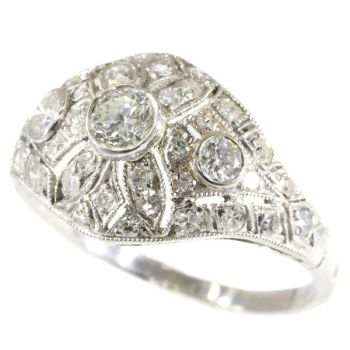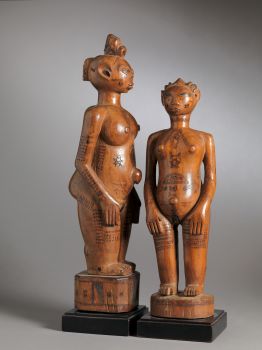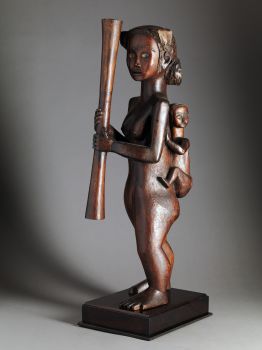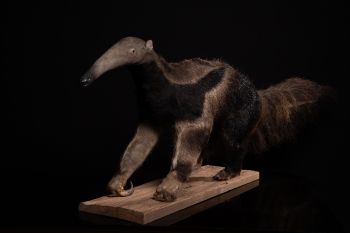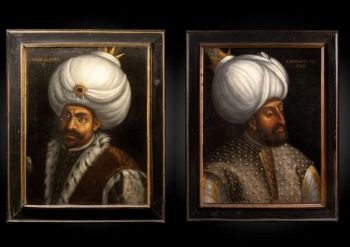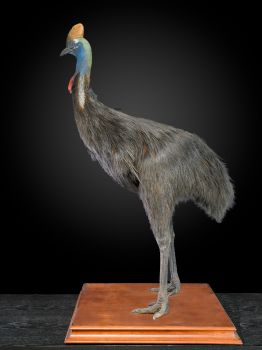Mendi Ceremonial Headdress, Western Highlands, Papua New Guinea. 1930 - 1950
Artista Desconocido
€ 18.000
Spectandum Gallery
- Sobre la obra de arteWig with headdress “kelep” from Southern Highlands province, Mendi Valley Tribes. Hat-shaped headdress made of dark human hair and rattan, bark and bast fiber structure. The headdress is topped with a ratan structure covered with bird feathers. Polished Kina and Nassa clam shells are used as ornaments. In Papua New Guinea the practice of body adornment is known as bilas and celebrates the intrinsic interconnection of people to all things living. Over millennia, different forms of bilas have emerged, fulfilling varied everyday physical, social, and spiritual needs in unique ways. Made from an array of natural resources including shells, feathers and plant fibers, some adornments signify power or prestige, others are for cultural celebrations and ceremonial purposes.There is no better place to experience first-hand the relationship between New Guinea Highlanders and birds than at a Highlands SingSing, a traditional dance ceremony. Previously SingSings were held as part of special ceremonial feasts; today SingSings have a more contemporary impetus, being staged for regional competitions, national holidays or Christian celebrations. SingSings feature elaborately decorated men and women dancing, chanting, and playing traditional musical instruments. A wide range of Highlands people and their costumes and dances can be experienced at the Highlands Shows, held in Goroka and Mount Hagen. Dancers, each representing his or her own clan or tribe, converge on these competitive events, which last several days. The dancers offer a broad sampling of the variety of human decoration featuring bird plumes that one encounters in the Highlands of New Guinea. Using the same basic materials, each society has developed a distinct aesthetic by which it defines beauty. It is this range of interpretation of the connections between humans and birds that makes Highlands decoration fascinating, underscoring as it does the basic human desire for variety and the appreciation of beauty that unites us all.
- Sobre el artista
Puede suceder que un artista o creador sea desconocido.
Algunas obras no deben determinarse por quién está hecho o por (un grupo de) artesanos. Algunos ejemplos son estatuas de la Antigüedad, muebles, espejos o firmas que no son claras o legibles, pero también algunas obras no están firmadas en absoluto.
También puedes encontrar la siguiente descripción:
•"Atribuido a …." En su opinión, probablemente una obra del artista, al menos en parte.
•“Estudio de….” o “Taller de” En su opinión, una obra ejecutada en el estudio o taller del artista, posiblemente bajo su supervisión
•“Círculo de…” En su opinión, una obra del período del artista que muestra su influencia, estrechamente asociado con el artista pero no necesariamente su alumno.
•"Estilo de …." o “Seguidor de…”. En su opinión, una obra ejecutada al estilo del artista pero no necesariamente por un alumno; puede ser contemporáneo o casi contemporáneo
•"Manera de …." En su opinión una obra al estilo del artista pero de fecha posterior
•"Después …." En su opinión, una copia (de cualquier fecha) de una obra del artista
•“Firmado…”, “Fechado…” o “Inscrito” En su opinión, la obra ha sido firmada/fechada/inscrita por el artista. La adición de un signo de interrogación indica un elemento de duda.
•“Con firma…”, “Con fecha…”, “Con inscripción…” o “Lleva firma/fecha/inscripción” en su opinión la firma/fecha/inscripción ha sido añadida por alguien que no es el artista
¿Está interesado en comprar esta obra de arte?
Related artworks
- 1 - 4 / 12
- 1 - 4 / 9




